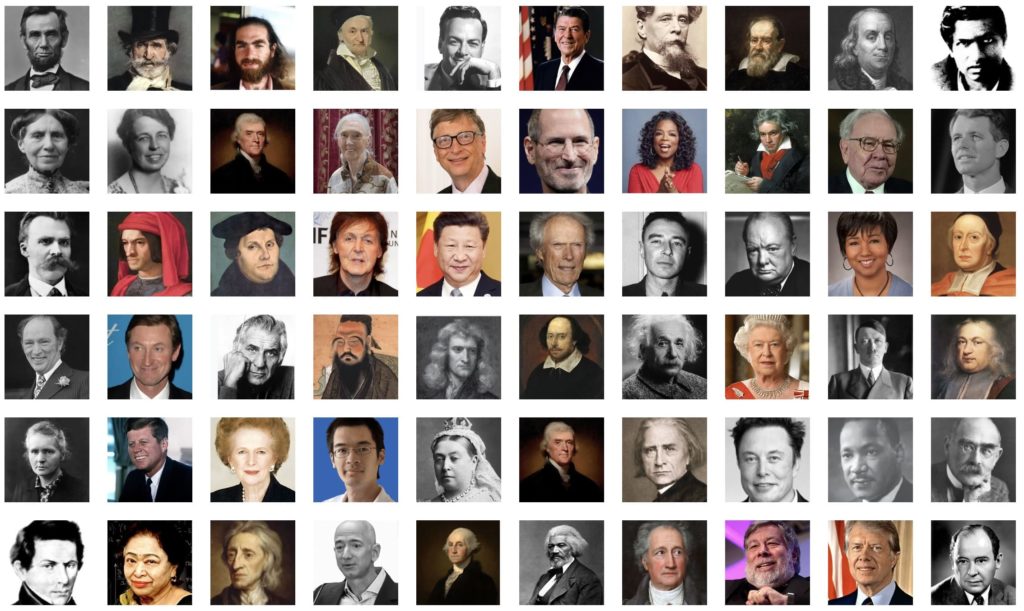
While we have a reasonably accurate knowledge of how intelligence changes with age, the question of how creativity changes with age remains under debate. Furthermore, it depends on the field in which creativity is measured. It is generally recognized that mathematicians and theoretical physicists reach the peak of their creativity before age 45. Other scientists reach their peak in creativity slightly later than this, because different cognitive skills come into play in different disciplines.
The Ages of Peak Creativity in Literature
If we turn our focus to English literature, we discover that many novelists did some of their best work decades after their first publications. Charles Dickens wrote The Pickwick Papers at age 24 and A Tale of Two Cities at age 47. George Orwell wrote Nineteen Eighty Four, his last novel, at age 46. Virginia Woolf wrote Mrs. Dalloway at age 43. George Bernard Shaw published Widower’s Houses at age 36, Man and Superman at age 44, Pygmalion at age 56, and St. Joan at age 67. John Steinbeck wrote The Winter of Our Discontent at age 59. Margaret Atwood published her first novel at age 30 and her (award-winning) novel The Testaments in 2019 at age 80. Yet, Kazuo Ishiguro, awarded the Nobel Prize in literature in 2017 for his novels The Remains of the Day and Never Let Me Go argues that novelists actually do their best work when they are young and are actually in decline when they reach eminence. He asserts:
There’s something very misleading about the literary culture that looks at writers in their 30s and calls them ‘budding’ or ‘promising,’ when in fact they’re peaking. Ishiguro’s assertion is supported by Sam Tanenhaus, who states in an essay published in a New York Times book review, in 2010:
Even great novelists …often performed their greatest magic when they were young. Flaubert was 29 when he began writing “Madame Bovary” …. Thomas Mann was 24 when he completed his first masterpiece, “Buddenbrooks.” Tolstoy, after a period of dissolution followed by military service, began writing “War and Peace” at age 34. Joyce, who wrote “Ulysses” in his 30s, already had two major works behind him. The late-blooming Proust, his youth idled in Paris salons, was only 37 when he began writing “Remembrance of Things Past.” Even Kafka, the 20th century’s most haunting exemplar of anguished paralysis, was 29 when he wrote “The Metamorphosis” and 31 when he began “The Trial.”
Adding another level of complexity to determining the age of optimal performance, Malcolm Gladwell, distinguishes between two types of poets, suggesting that conceptual thinkers write their best poetry early in their careers, while those who take a “tentative and incremental” approach to their work require decades to develop their craft and therefore, peak much later. He asserts:
Some poets do their best work at the beginning of their careers. Others do their best work decades later. Forty-two per cent of [Robert] Frost’s anthologized poems were written after the age of fifty. For [Tennessee] Williams, it’s forty-four per cent. For [Wallace] Stevens, it’s forty-nine per cent.
The Ages of Peak Creativity in Classical Music and Art
In a study of 120 classical music composers, Dean Keith Simonton discovered that their first acclaimed composition was written on average at the age of 26 years. Their most highly acclaimed composition was written just under age 40 and their last acclaimed work just after age 50. Though the rise and decline of creative achievement with age varies somewhat across all disciplines, the general shape of this evolution is similar for all domains. Usually beginning in early adulthood, the quality of production rises to a peak sometime into middle age and slowly declines over the next several decades.
The age at which artists reach their creative peak is even more difficult to assess because there is no universal agreement on which of their works is their best. Leonardo da Vinci painted the Mona Lisa when he was 50. Michelangelo began painting the ceiling of the Sistine Chapel when he was 33, and completed it four years later. Van Gogh painted Starry Night when he was 36 years of age, and Picasso introduced cubism with his painting Les Demoiselles d’Avignon when he was 26 years old.
As people approach retirement, they have more personal free time to pursue their hobbies and interests, and this gives rise to the perception that greater creativity comes with age. However, it’s more likely that we have more creative potential when we’re young, but less opportunity to express it.
